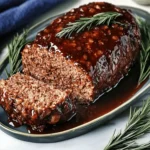The Story Behind Louisiana Gumbo
Gumbo is more than just a dish; it’s a representation of Louisiana’s rich cultural tapestry and culinary history. Born from a blend of African, French, Spanish, and Native American influences, gumbo embodies the melting pot of flavors that define Creole and Cajun cuisine. Every spoonful of this hearty stew tells a story of heritage, tradition, and the art of bringing people together over good food.
The word “gumbo” itself is derived from the West African term for okra, “ki ngombo,” reflecting the dish’s African roots. Historically, gumbo was a meal that combined ingredients available locally or seasonally, resulting in a versatile dish that varied widely across different communities in Louisiana. Its adaptability and inclusivity make gumbo a dish that continues to evolve, just as Louisiana’s culture does.
What Makes Gumbo Unique?
Gumbo is renowned for its complexity and depth of flavor, achieved through the careful layering of ingredients and techniques. Central to gumbo is its roux—a mixture of fat and flour cooked until dark brown. This roux forms the backbone of the dish, adding richness and a nutty, slightly smoky flavor. Achieving the perfect roux requires patience and skill, making it a defining element of gumbo preparation.
Beyond the roux, gumbo incorporates the “Holy Trinity” of Creole cooking: onions, celery, and green bell peppers. This trio of vegetables provides a savory base that complements the proteins and spices. Additions like andouille sausage, shrimp, and gumbo filé powder (ground sassafras leaves) further enhance the dish’s flavor profile, making each bowl a symphony of tastes.
The Cultural Significance of Gumbo
Gumbo holds a special place in Louisiana’s culinary and cultural identity. It’s a dish that brings people together, often served at family gatherings, festivals, and community events. For many, gumbo is not just a meal—it’s a tradition passed down through generations. Each family may have its unique recipe, adding their personal touch to the classic dish.
The debate over what constitutes “authentic” gumbo is ongoing, with some arguing over the inclusion of tomatoes or okra. However, this diversity in preparation is what makes gumbo so special. It reflects the individuality of the cook and the regional influences they bring to the table.
Variations of Gumbo
One of gumbo’s greatest strengths is its adaptability. While shrimp and andouille sausage are common ingredients, the dish can also feature chicken, crab, crawfish, or even duck. In fact, the type of gumbo you’ll encounter often depends on the season and the cook’s preferences. Here are a few popular variations:
- Seafood Gumbo: This version highlights the bounty of the Gulf Coast, featuring shrimp, crab, and sometimes oysters. It’s particularly popular during Lent when meat is traditionally avoided.
- Chicken and Sausage Gumbo: A heartier option that combines smoked sausage with tender chicken, this version is a favorite for its robust, smoky flavor.
- Vegetarian Gumbo: While less traditional, vegetarian gumbo replaces the meat with an abundance of vegetables and sometimes tofu or plant-based sausage for a modern twist.
- Duck and Andouille Gumbo: A rich, decadent version often served during special occasions or holidays.
Tips for Perfect Gumbo
Creating the perfect gumbo requires time, patience, and attention to detail. Here are some expert tips to help you master the dish:
- Take Your Time with the Roux: The roux is the foundation of gumbo, and its color determines the depth of flavor. Stir constantly over low heat to avoid burning, aiming for a deep chocolate brown.
- Layer Your Flavors: Add ingredients gradually, allowing each to release its flavor before adding the next. This method ensures a well-rounded, complex stew.
- Don’t Skip the Gumbo Filé Powder: This essential ingredient not only thickens the gumbo but also imparts a unique earthy flavor.
- Cook Low and Slow: Gumbo is not a dish to rush. Simmering the stew for several hours allows the flavors to meld and develop fully.
- Customize to Taste: Feel free to experiment with proteins, spices, and vegetables to make the dish your own. Gumbo’s versatility is one of its greatest charms.
Gumbo as a Celebration Food
In Louisiana, gumbo is often associated with celebrations and communal gatherings. It’s a dish that can feed a crowd, making it ideal for parties, family reunions, and festivals. During Mardi Gras, gumbo is a staple on many tables, offering a comforting meal amidst the vibrant festivities.
Gumbo’s role as a celebration food also extends to its use in marking milestones. Whether it’s a wedding, a holiday feast, or simply a weekend gathering, serving gumbo symbolizes warmth, hospitality, and a shared love for good food.
Health Benefits of Gumbo
While gumbo is undeniably indulgent, it also offers nutritional benefits. The dish is rich in protein, thanks to ingredients like shrimp and sausage. Vegetables such as bell peppers, onions, and celery provide vitamins and minerals, while spices like thyme and cayenne pepper offer antioxidants. To make gumbo even healthier, consider using lean proteins and reducing the amount of butter in the roux.
Serving Suggestions and Pairings
Gumbo is traditionally served over a bed of fluffy white rice, which absorbs the flavorful broth and balances the dish’s richness. For an authentic Louisiana experience, pair gumbo with:
- Cornbread: A slightly sweet and crumbly cornbread complements the savory flavors of gumbo.
- Potato Salad: In some parts of Louisiana, it’s customary to serve a scoop of potato salad alongside or even in the gumbo.
- Crusty French Bread: Perfect for sopping up every last drop of the delicious broth.
- Cold Beer or Sweet Tea: These beverages offer a refreshing contrast to the dish’s robust flavors.
Why Gumbo Endures
The enduring popularity of gumbo lies in its ability to adapt while remaining deeply rooted in tradition. It’s a dish that celebrates diversity, not only in its ingredients but also in the people who prepare and enjoy it. Gumbo is a reminder that food has the power to connect us, transcending cultural and geographical boundaries.
Conclusion
Gumbo is more than just a meal; it’s a celebration of culture, community, and culinary artistry. Its rich history, versatile nature, and unparalleled flavor make it a dish that continues to captivate food lovers around the world. Whether you’re making it for the first time or revisiting a cherished family recipe, gumbo invites you to slow down, savor the process, and share the joy of good food with those around you.






